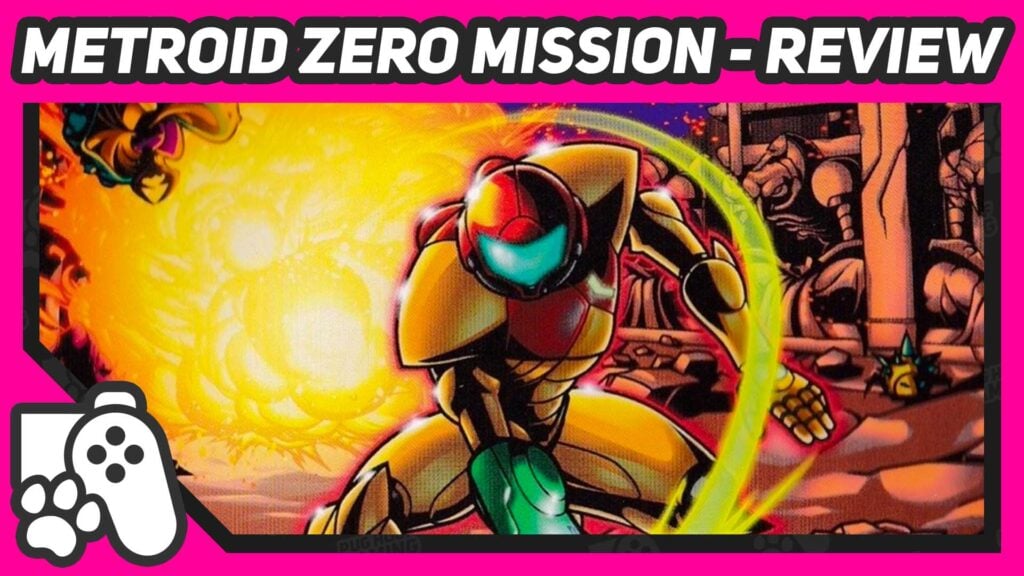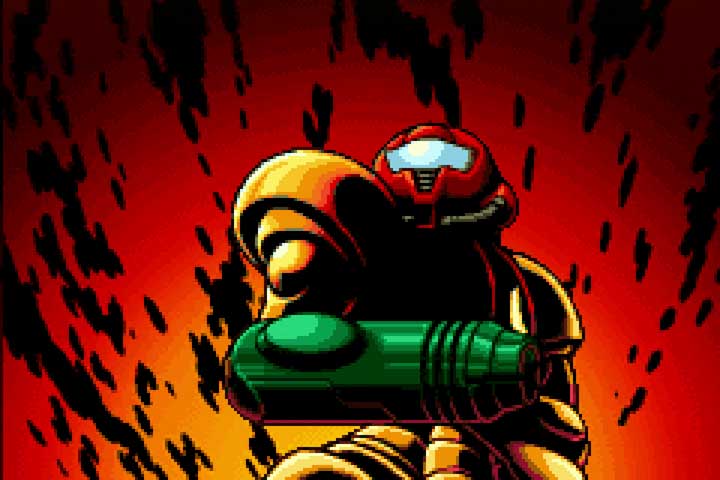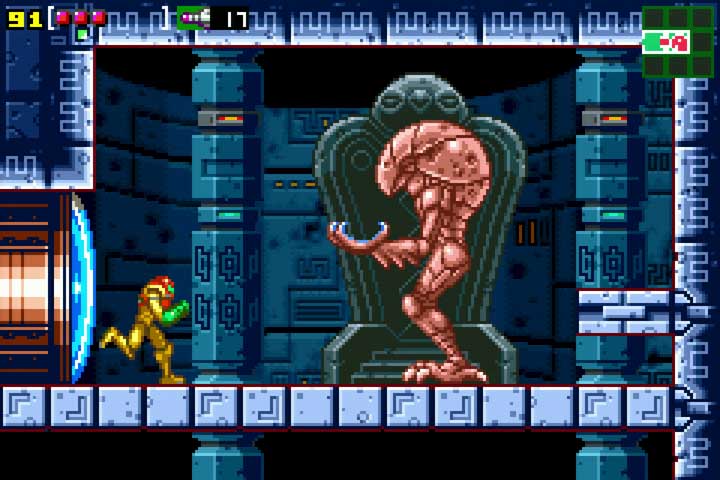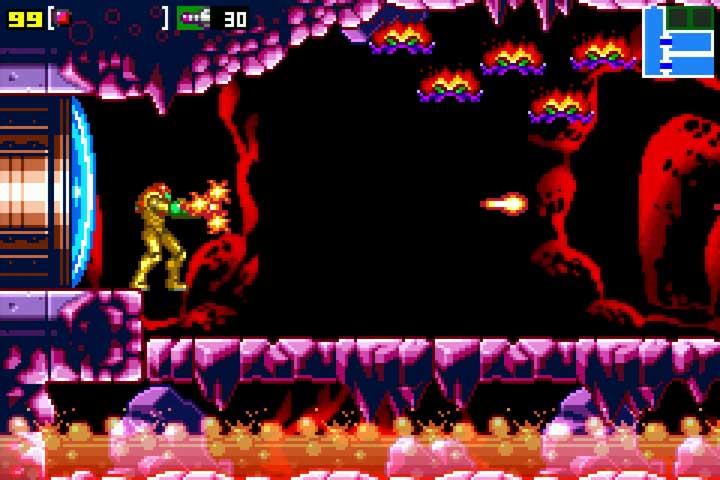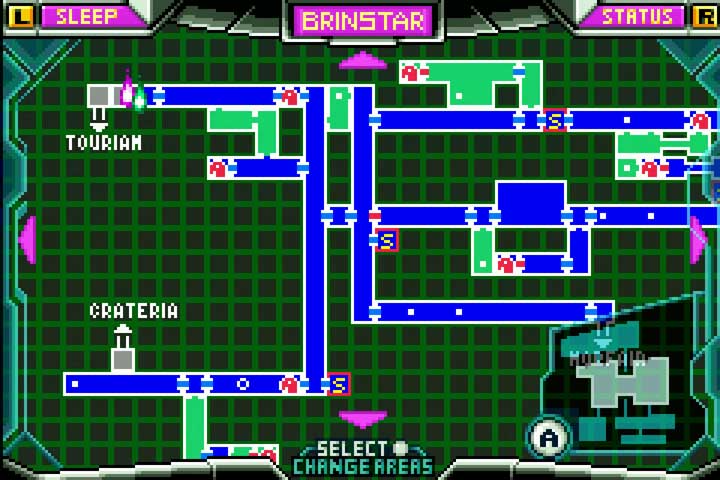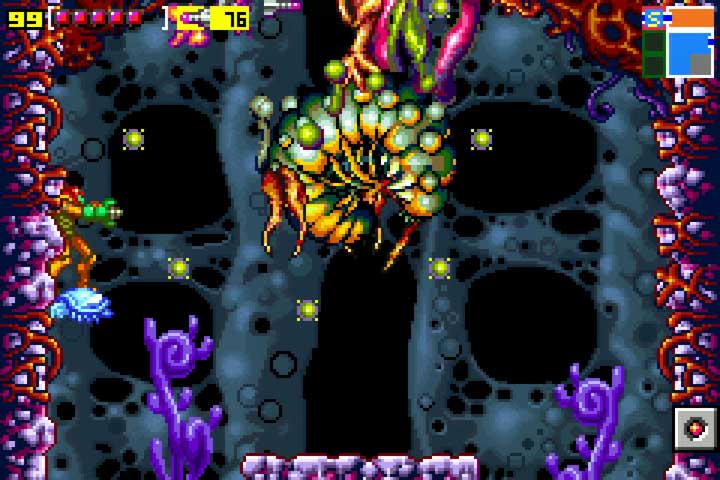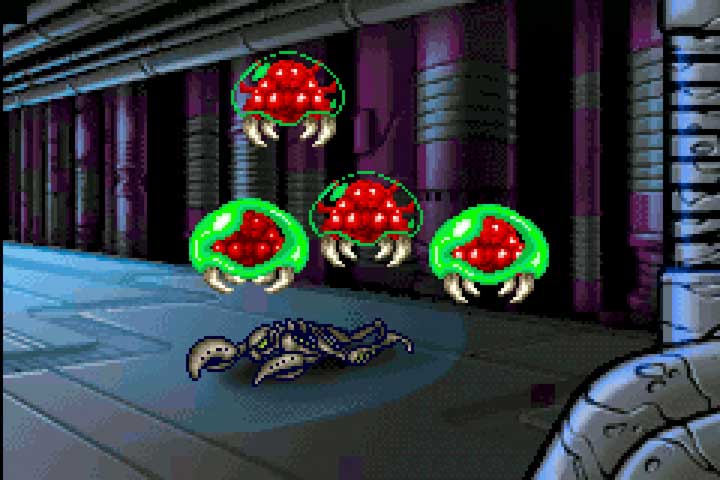We’re around the halfway point on my Road To Metroid Dread, but we’re already turning around and already going way back to the very beginning of our journey, to revisit the very first Metroid game, recreated from the ground up in the form of Zero Mission.
If you recall my review of Metroid, you’ll know that I find the original game very archaic and not a particularly friendly game to play in 2021. It’s a title that is filled with the sort of unfairly difficult gameplay that was commonplace on the Nintendo Entertainment System, and as a result, it’s a real hard recommendation. That is especially true after Metroid: Zero Mission was released on the Game Boy Advance in 2004.
Built upon the foundations of Metroid Fusion, this was the very first time that a Nintendo console received two Metroid titles (a feat repeated many times since). Its development came from an initial idea to remake Super Metroid for the system, but it was deemed that a remake of the original game was of greater value – To show a new generation of Metroid players where the series began, but to also insert more of Samus’ mysterious backstory at the same time.
Metroid Zero Mission Review
And so, Zero Mission takes us back to Planet Zebes – Familiar territory if you’ve already played Metroid and Super Metroid, of course. It’s been given a pretty nifty coat of paint – The colours are much more vivid, to account for the Game Boy Advance’s lack of a backlight, but even if you’re playing on a larger screen via emulation or the Game Boy Player like I am here; it’s a really good looking game. To add more narrative substance, the game does add some absolutely stunning cutscenes to move things along – However, unlike Metroid Fusion, there is almost no text in the entire game, save for a couple of brief monologues from Samus.
If you grew tired of Fusion’s insistence on telling you where to go and telling you too much, Zero Mission is certainly a little less overbearing in this regard. It’s not quite the happy medium between Metroid’s obtuse exploration and Fusion’s complete lack of subtlety, but it’s certainly a step in the right direction. Barely a few minutes in, you’ll meet the first of several Chozo statues. These ancient machines will heal Samus and fill up her missile tanks, occasionally offer new upgrades as is tradition, but in many cases will now also show the player exactly where they need to go next. In many cases, it will point to a blank space on the map, so at least it’s up to the player to find their way around, but it’s almost too difficult to get lost. Much like Fusion’s Navigation Rooms, these hints are a necessity, and more or less strip the mystery and exploration from the game, and are quite disappointingly heavy-handed when compared to Super Metroid’s invisible approach to guiding the player. Bear in mind that this game was released at a time Nintendo were courting non-core gamers, and you can understand their approach with this remake.
Luckily, Zero Mission has much more to offer than a simple like-for-like remake. The skeleton of Metroid is here but has been fleshed out with brand new areas, new power ups and upgrades, even more bosses, and some real surprises. I don’t think a Metroid game has ever given me a jump scare before, but this one did; and let’s just say that the game doesn’t end after defeating Mother Brain, twisting into a brief epilogue of sorts that provides a drastic departure from typical Metroid gameplay, delving into the stealth game genre.
Even the parts that return from the original game are made new with a few embellishments. These weird bugs occasionally pop up from time to time to slow you down and almost seem like part of the environment, but you eventually learn they can be manipulated to help your progress. There are also these additional segments featuring these weird gigantic bugs that are indestructible aside from their soft bellies, leaving the player to solve some puzzles and figure out how to destroy these beasts to get past. It’s these little details and additions that make Zero Mission a worthwhile play, even if you’ve played the NES original to death.
And for those that haven’t, there’s oodles of quality of life upgrades that soften up those particularly hard edges of the original game. Samus controls far better than she ever did in the original game, keeping the agility she had in Fusion, and the ability to grip onto ledges unlocked when the Power Grip upgrade is discovered. For those who frequently got lost on Zebes the first time around, there’s now a map, which is worth its weight in gold. As for finding hidden paths and secrets, Morph Ball bombs make it handy to find out what weapons can be used to break blocks, plus some of the fake lava pits that are required to progress further, are easily spotted thanks to some transparency effects. They even thought to add a few shortcuts between certain areas that use some of the new upgrades added to Zero Mission, which makes backtracking a more enjoyable proposition. Oh, and no more passwords – Just a whole lot of handy Save Stations that are never too far away to save your progress. If you’re still a bit green to the Metroid series, there’s the addition of an Easy difficulty and if you finish the game you can unlock Hard Mode as well.
Admittedly, whilst all of these additions make Metroid finally palatable to modern players, they do subtract a little from that brilliant atmosphere that captured players’ attention back in the mid-’80s. Even on Normal, I found Zero Mission to be almost too easy and even I was surprised at how quickly I sped through the game on my first attempt in over a decade and a half. With that said, these days I’m not particularly angry at a game for being short – It’s a plus in many situations (Like, I dunno, you want to try and finish 14 Metroid games in the space of a couple of months). The additional stealth segments added on post-Mother Brain are pretty cool and are probably the hardest parts of the game by far, but unfortunately, this epilogue is over almost as soon as it begins, ending incredibly abruptly, just when you think there’s more to come.
Yet, I found the entirety of Zero Mission to be an absolute blast, and there’s something to be said for a game that’s so fun to play that you wish there was more of it. There’s a very brisk pace to the game, and very little downtime to be had here – You’re never too far away from a boss or an upgrade, so even a few minutes of handheld play yields a lot of progress. The inclusion of upgrades such as the Speed Booster, Power Grip and Super Missiles allows for the addition of some very fun puzzle areas that cleverly utilise these new skills in exchange for more missile or energy tanks. Seeing that Zero Mission puts you on such a strict path, at least there are plenty of missile and energy tanks to be found, but there aren’t any bosses that are troubling enough for you to require all of these optional upgrades unless you’re playing on Hard. In terms of the bosses themselves, Kraid and Ridley have more or less been upgraded to their Super Metroid forms but are considerably easier to defeat, whilst the new bosses have pretty telegraphable move sets and weak points.
There is also a considerable amount of extended play value to be gleaned after completion if you want it – Finishing the game on different difficulties, within different time limits with a different item collection rate will give you a different piece of artwork upon completion, and Zero Mission is kind enough to unlock a Gallery to keep track of the ones you’ve found. There’s eight in total, so if you’re really dedicated there are at least eight reasons to play the game all the way through, and I reckon trying to unlock the ending for finishing the game on Hard with 15% of items or less will keep you busy. If you’ve already finished Metroid Fusion, you can also link the game with Zero Mission to unlock all of the former games ending screens, including the Japanese-exclusive ones. Completing Zero Mission will also unlock the original NES Metroid if you want to compare the two titles for yourself, and finishing on Hard Mode will unlock a Sound Test. If all of that is not enough of an excuse to replay the game, there’s also a Time Attack mode to be unlocked by highlighting the Start Game option on the completed save file and pressing Up, Left, Right and Down. So, while a playthrough of Zero Mission is only a couple of hours long, at least there is some extended play available if you’re not done with the game. In development, there was some GBA to Gamecube link proposed between Zero Mission and Metroid Prime 2: Echoes, but this was not to be due to strict deadlines and the length of time between the release of the two titles.
The inclusion of all of that additional content, plus all of the mod-cons pretty much makes the original Metroid almost obsolete, and really hard to recommend someone go back to, even if they do come at a cost. As mentioned earlier, the visuals look fantastic on any screen and are extremely well animated – Everything really pops. Naturally, Metroid’s sparse, simplistic musical tracks are given a good old spruce up here, with all new versions of all of those classic tracks, plus heaps more for the new sections. They all sound great and feel like a natural extension to the tracks heard in Super Metroid, although in some ways the more abstract original NES tracks help bring that feeling of isolation that I feel is missing in Zero Mission overall.
It is these differences that make this title such a brilliant remake, but in some ways, one that almost misses the point of the game its modernising. Not enough of a balance has been reached with keeping the best parts of the original NES game, whilst adding the many quality of life upgrades that have come to the series since its debut. Even if this remake itself features some truly sublime gameplay, some of the soul of Metroid has been stripped away. But don’t let that detract from what is essentially, a really, really good Metroid game with a lot to love – I would absolutely choose this remake over the original, any day of the week.
This Metroid Zero Mission review comes to a close; but The Road To Dread continues, and we’re switching back to the Nintendo Gamecube to take a look at the middle part of Retro Studio’s trilogy of first-person games: Metroid Prime 2: Echoes. Join me as Samus meets her newest nemesis and explores different versions of the same planet. Until then, feel free to catch up on the previous episodes of the Road To Dread so far.
